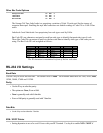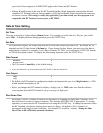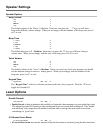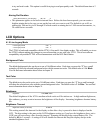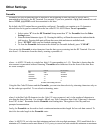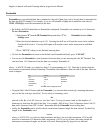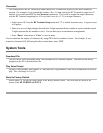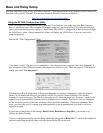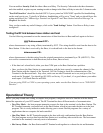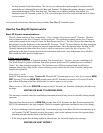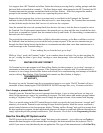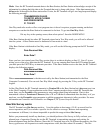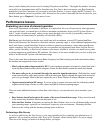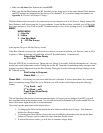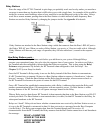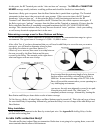
You can enable a Security Code for either a Base or a Relay. The Security Code needs to be three characters
and when enabled, requires anyone wanting to make a change to the Base or Relay to enter this 3-character code.
"Xon/Xoff Sensitive" should be checked ONLY if your system has XON/XOFF specified for handshaking
on the serial port in use. Typically in Windows, handshaking will be set to "None" and you should leave this
setting unchecked. See "Addressing a Terminal not Signed In" and "Base Station Initialized Message" in
Chapter 6 for details.
Once you have made any and all changes, click on the "Send Settings" button. Your Base or Relay is now
configured!
Testing the RF link between base station and host
Use the following command to test the transmission of data from host to Base and back again to the host:
@@*Edataaaaaaaa<EOT>
where dataaaaaaaa is any string of data, terminated by EOT. This string should be sent from the host to the
Base Station. If the data is received by the Base, it is echoed back to the host in the format:
dataaaaaaaa<CR>
where dataaaaaaaa is the data string from the original transmission, terminated by a CR (ASCII 13). This
test verifies communication in both directions (host to Base, Base to host).
• If the data isn’t echoed back, either your host COM port or the Base Station has a problem.
• Once you know the Base Station is communicating with the host correctly, compare the channel of the
Base Station with the channel of the Terminal. Use Site Testing to check the communication of the
Terminal to the Base and back. Stay close, make sure no other Terminals are in use, and go to Site Test
mode on the Terminal. You should get 90-100% on first try. If you don’t, it’s a good chance your radios
need repair. Call Worth Data for an RMA.
If you are using PICK or UNIX as your operating system, make sure the Base Station is set to "XON/XOFF
Sensitive".
Operational Theory
Before you jump in and start writing a complex host program, it might be nice to be familiar with the theory
behind the operation of your RF Terminal. The RF Terminal has three different modes of communication:
• Two-Way Mode - the host program transmits requests for data to the terminal via the Base Station. The
RF Terminal transmits a response back to the Base Station, which in turn sends the data on to the host
program. This is a truly interactive mode allowing you to create flexible programs for a variety of
applications that are computer led and controlled.
• One-Way Mode - the RF Terminal transmits to the host with only confirmation from the Base Station.
The host program receives data from the Base Station as it would any other serial device. The host cannot
send data to the terminal; it can only receive information.
• Site Survey Mode – the Base Station and RF Terminal work together to evaluate the site and determine



